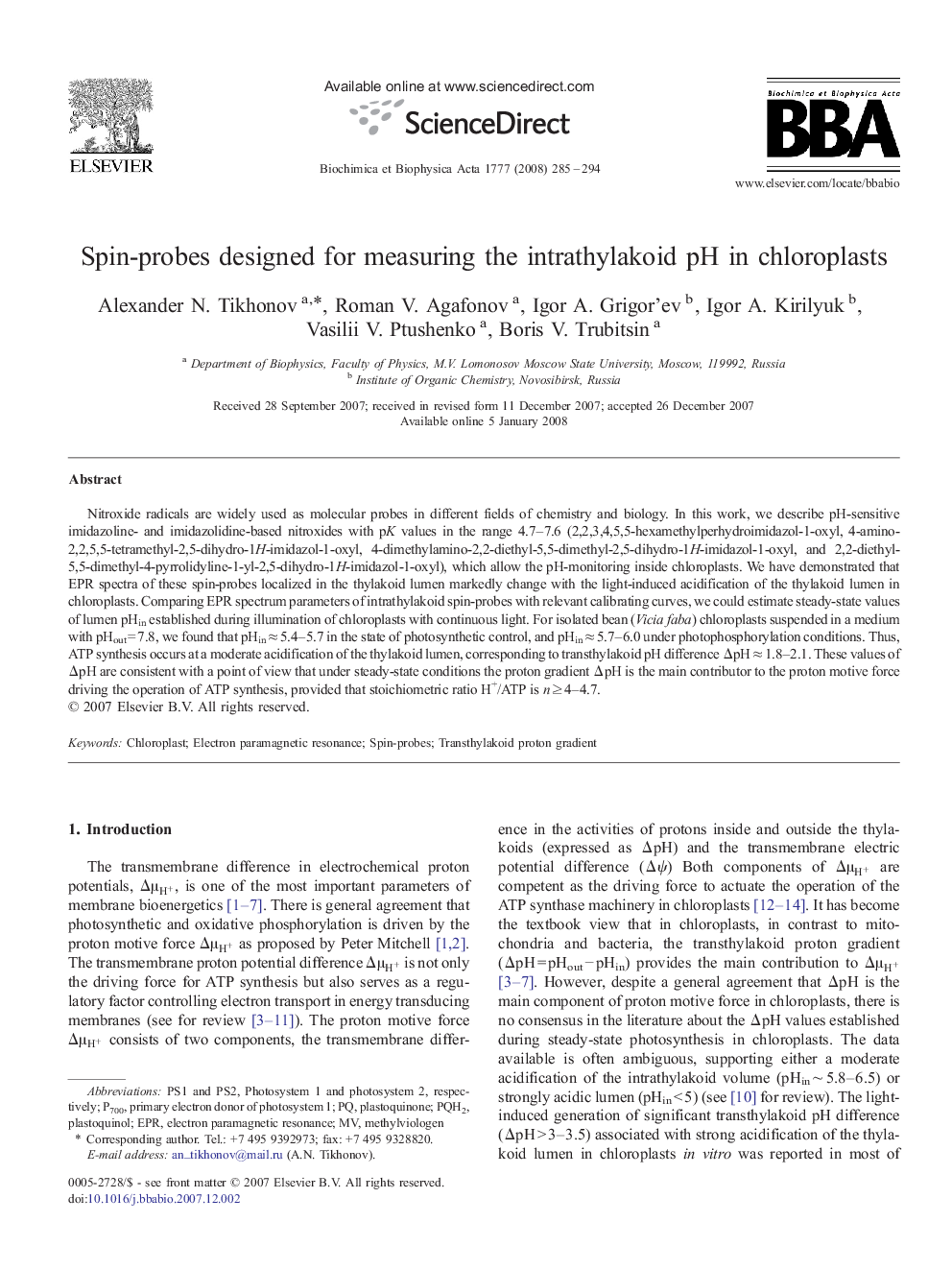| Article ID | Journal | Published Year | Pages | File Type |
|---|---|---|---|---|
| 1943277 | Biochimica et Biophysica Acta (BBA) - Bioenergetics | 2008 | 10 Pages |
Nitroxide radicals are widely used as molecular probes in different fields of chemistry and biology. In this work, we describe pH-sensitive imidazoline- and imidazolidine-based nitroxides with pK values in the range 4.7–7.6 (2,2,3,4,5,5-hexamethylperhydroimidazol-1-oxyl, 4-amino-2,2,5,5-tetramethyl-2,5-dihydro-1H-imidazol-1-oxyl, 4-dimethylamino-2,2-diethyl-5,5-dimethyl-2,5-dihydro-1H-imidazol-1-oxyl, and 2,2-diethyl-5,5-dimethyl-4-pyrrolidyline-1-yl-2,5-dihydro-1H-imidazol-1-oxyl), which allow the pH-monitoring inside chloroplasts. We have demonstrated that EPR spectra of these spin-probes localized in the thylakoid lumen markedly change with the light-induced acidification of the thylakoid lumen in chloroplasts. Comparing EPR spectrum parameters of intrathylakoid spin-probes with relevant calibrating curves, we could estimate steady-state values of lumen pHin established during illumination of chloroplasts with continuous light. For isolated bean (Vicia faba) chloroplasts suspended in a medium with pHout = 7.8, we found that pHin ≈ 5.4–5.7 in the state of photosynthetic control, and pHin ≈ 5.7–6.0 under photophosphorylation conditions. Thus, ATP synthesis occurs at a moderate acidification of the thylakoid lumen, corresponding to transthylakoid pH difference ΔpH ≈ 1.8–2.1. These values of ΔpH are consistent with a point of view that under steady-state conditions the proton gradient ΔpH is the main contributor to the proton motive force driving the operation of ATP synthesis, provided that stoichiometric ratio H+/ATP is n ≥ 4–4.7.
